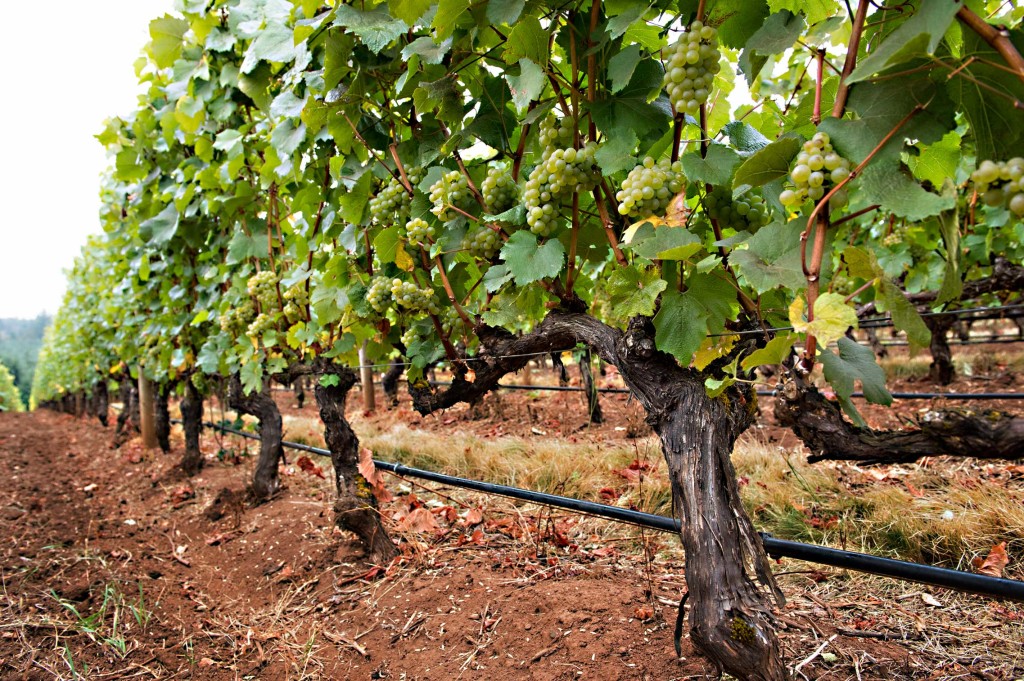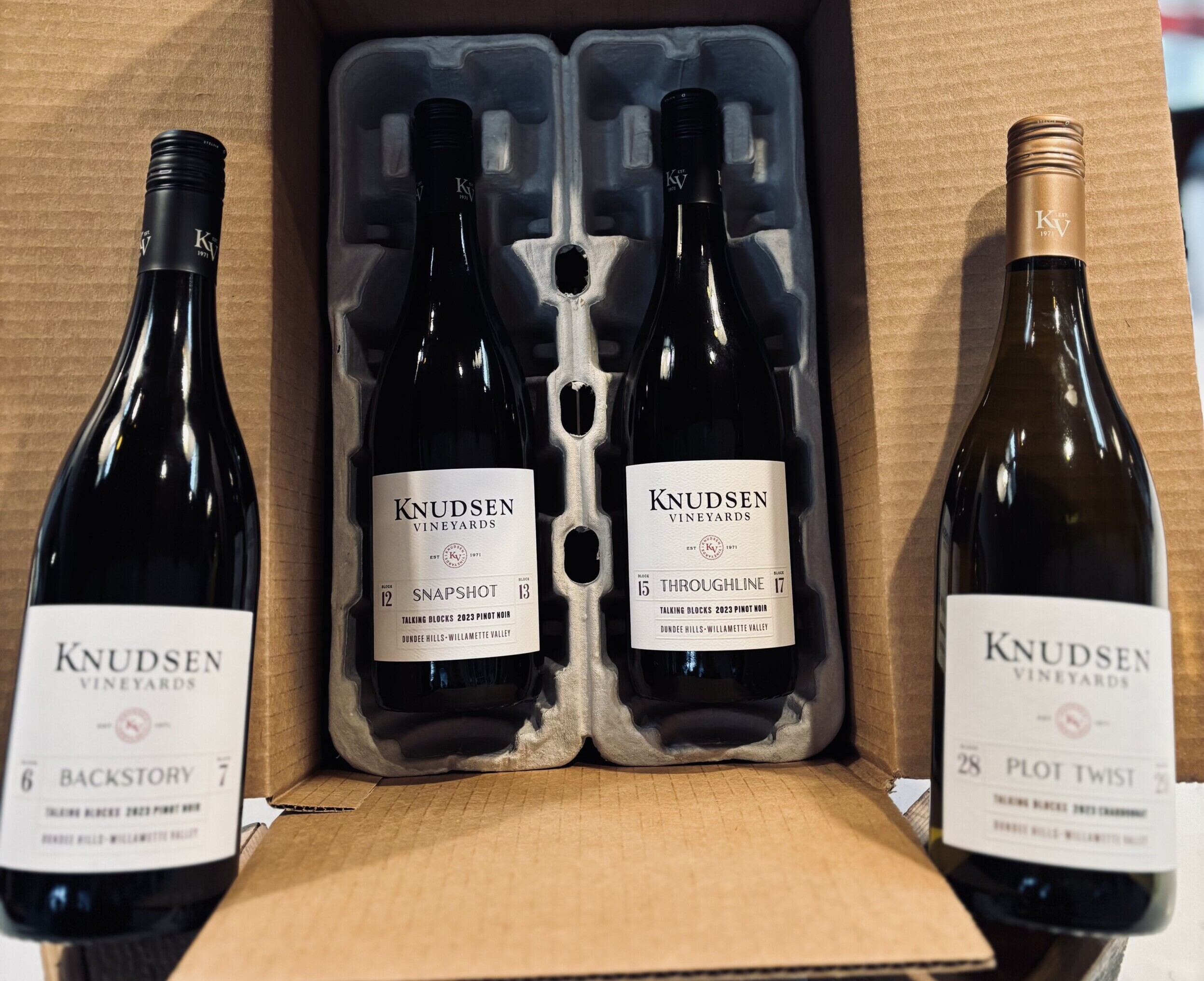
Introduction to Heritage Oregon Pinot Noir Clones
Let’s delve into the rich history and unique character of Oregon’s Pinot noir wines! We’ll explore the heritage Oregon Pinot noir clones used in crafting Knudsen Vineyards exceptional wines and deep-rooted traditions and innovative techniques that have shaped Oregon’s winemaking landscape. Join us on a journey through time and taste as we uncover the stories behind these heritage clones and their influence on the renowned Oregon Pinot noir experience.
What is a Grape Clone?
A clone is a selection of grape vine chosen for desirable traits, which may include growing habits or wine characteristics.
The clonal selection chosen for producing Pinot noir along with the soils, microclimate and viticulture are crucially important in determining the resultant flavor profile of the wine.
The History of Heritage Clones in Oregon Pinot Noir
Oregon’s history begins in the 1960s and 1970s when visionary pioneers like David Lett of Eyrie Vineyards, Dick Erath of Erath Winery and Knudsen Vineyards planted the first Pinot noir vines in the Willamette Valley. These early plantings included a diverse selection of Pinot noir clones sourced from renowned wine regions such as Burgundy, France.
As vineyards planted by pioneering vintners in Oregon matured and winemakers gained experience, they began to identify certain clones that thrived in Oregon’s unique terroir. These clones, often referred to as heritage clones, became prized for their ability to express the distinct characteristics of Oregon Pinot noir: vibrant fruit flavors, elegant structure, and a beautiful balance of acidity.
Over the decades, Oregon’s wine industry has continued to evolve, with winemakers carefully selecting and propagating the best-performing heritage clones. Today, these clones play a crucial role in defining the quality and diversity of Oregon Pinot noir, showcasing the region’s rich winemaking heritage and ongoing dedication to excellence.

Dick Erath with Cal Knudsen at Knudsen Erath Winery in the 1970s.
Exploring the Diversity of Heritage Oregon Pinot Noir Clones
Here, we’ll explore the clones grown at Knudsen Vineyards (today there are around 1,000 clones in the world – though not all are commercially relevant).

Pommard Pinot noir Clone
Known as a “workhorse” clone for its flexibility, it can work well bottled as a single clone.
It is sometimes known for having a meaty/gamey edge, but it typically expresses itself through very pure dark fruits.
Origin: Pommard, Burgundy
777 Pinot noir Clone
Lower yielding with compact clusters and small berries.
The resulting wines have intense color (due to thick skins & skin to juice ratio) with highly structured tannins. Produces aromatic wines with complex black fruit flavors.
Origin: Dijon, Burgundy
4406 Pinot noir Clone
Clusters tend to be long and slim with densely colored berries.
Wines made with this clone have a nice balance of power and elegance – typically bright berry flavors and spice.
667 Pinot noir Clone
The size and appearance is very similar to 777 clones.
Wines made with this clone typically have higher-toned red fruits and soft tannins.
115 Pinot noir Clone
A fragrant profile including floral notes, leather, and spice, its prized for its ability to produce a seamless Burgundian-style wine on its own. Fun fact: Clones are sequentially numbered – thus, this is an early numbered clone from the University in Dijon.
Origin: Dijon, Burgundy
Selection and Propagation of Heritage Oregon Pinot Noir Clones
- Selection: Wine grape clones are selected and propagated through a careful process that involves observation, evaluation, and strategic cultivation.
- Field Trials: Winemakers and viticulturists begin by identifying grapevines with desirable traits such as disease resistance, flavor profile, yield consistency, and adaptability to specific terroirs.
- Evaluation: Once potential clones are identified, they undergo field trials where they are planted in different vineyard sites to assess their performance under varying conditions. During the growing seasons, the clones are closely monitored and evaluated for key parameters such as grape quality, yield, ripening patterns, and resistance to pests and diseases. Tasting evaluations by winemakers may also be conducted to assess flavor profiles.
Propagation: Clones that demonstrate superior characteristics and consistency over multiple seasons are selected for propagation. This involves carefully taking cuttings or buds from the selected vines and grafting them onto rootstocks, ensuring genetic continuity and stability. - Commercialization: Before widespread distribution, new clones may undergo additional testing and certification processes to confirm their identity, purity, and performance before being made available to vineyard owners and winemakers for planting in their vineyards. They may be sold through nurseries specializing in grapevine propagation and distribution.

Terroir Influence on Heritage Oregon Pinot noir Clones
Terroir plays a significant role in influencing heritage Oregon Pinot noir clones, shaping their characteristics and ultimately the wines they produce. Here are a few ways that terroir can impact these clones:
- Climate: Oregon’s climate, characterized by cool temperatures and distinct seasons, is well-suited for growing Pinot noir. Different microclimates within the state, such as the Willamette Valley’s maritime influence. Clones that ripen earlier or tolerate cooler conditions may be chosen for specific vineyard sites based on their microclimate.
- Oregon’s diverse soil types, including volcanic, sedimentary, and alluvial soils, contribute to the unique flavors and structure of Pinot noir. Certain clones may thrive in specific soil types, influencing their expression in the wine.
- Topography and Aspect: The slope, elevation, and aspect (the direction the vineyard faces) also impact clone selection. Clones suited to sun exposure or able to withstand cooler temperatures due to elevation differences may be chosen accordingly. South-facing slopes, for instance, receive more sunlight and warmth, affecting grape ripening and flavor development.
Preservation Efforts: Protecting Heritage Clones for Future Generations
Heritage clones of Pinot noir, like other valuable plant material, are protected for future generations through various measures aimed at preserving their genetic integrity and availability. Here are some common methods:
- Vineyard Collections: Many institutions, such as agricultural research centers, universities, and private vineyards, maintain collections of heritage clones. These collections serve as repositories for genetic diversity, allowing researchers and viticulturists to study and propagate these clones for future use.
- Nurseries and Propagation Programs: Licensed nurseries specializing in grapevine propagation often play a crucial role in preserving heritage clones. They carefully propagate and distribute certified clones to vineyard owners, ensuring that the genetic material remains true to its original characteristics.
- International Collaborations: Collaborative efforts between institutions, vineyards, and regulatory bodies on a national and international level help safeguard heritage clones. These collaborations often involve sharing resources, exchanging genetic material, and promoting sustainable practices in vineyard management and propagation.
- Legal Protections: In some cases, legal protections such as plant variety rights, trademarks, or patents may be used to protect heritage clones from unauthorized propagation or misuse. These legal frameworks help ensure that breeders and custodians of genetic material receive recognition and support for their efforts.
By implementing these measures and fostering a collaborative approach to conservation, heritage clones of Pinot noir and other grape varieties can be protected and perpetuated for future generations of winemakers and wine enthusiasts to enjoy.








